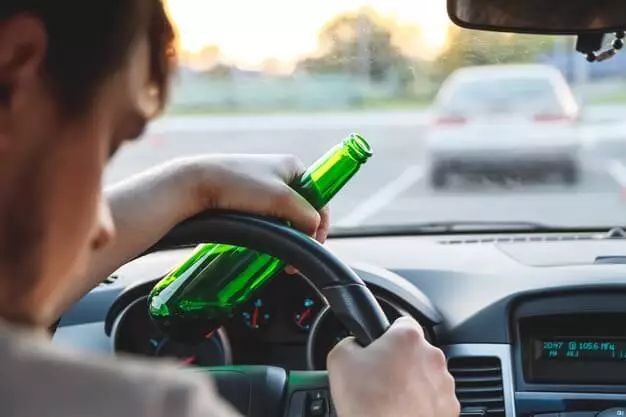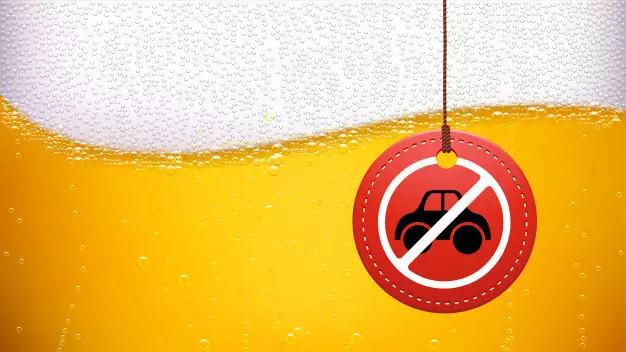
What is BAC?
BAC stands for blood alcohol concentration, which means how much of your blood is saturated with alcohol. For example, a .10 BAC means that .1% of your blood is alcohol. To put it another way, .10 means that for every 1000 parts blood, 1 part is pure alcohol. As the level goes up, more of your blood becomes alcohol, and your body starts to show signs of dysfunction. With a high enough level, your body can completely shut down, and you could die.
Individual Factors that Affect Blood Alcohol Concentration Levels
Each state has specific limits of BAC that dictate DUI/DWI laws. According to one alcohol test, someone who might be considered unsafe to drive in one state may be okay in another. It highly depends on the rules in that area. Some factors that affect blood alcohol content levels are:
- Gender (females tend to get intoxicated quicker with less alcohol).
- Bodyweight.
- Food, if you ate before drinking, some of it might be absorbed.
- The number of drinks.
- How quickly you drank and over how long a period.
- Medications can interact with alcohol affecting someone’s BAC.
- Genetics.
- Standard drink or binge drinking.
- Body fat.
Other factors can have additional effects on BAC as well. You may have a much higher BAC drinking hard liquor than a glass of wine. The number of ounces of beer or ounces of wine matter also.

What is High Blood Alcohol Level?
Depending on the state in which you live, .080 is the legal intoxication limit, which will earn you a DUI or DWI if you are driving. At this level, your coordination suffers, and you are impaired. However, at .100, you are considered drunk in all states. Anywhere from .120-.450, your body starts to show severe signs of alcohol poisoning, and eventually, you slip into a coma. Some of the symptoms of alcohol poisoning are problems with balance, vomiting, blackouts, loss of consciousness, and breathing impairment or stoppage. Some effects from a high BAC level are:
- Slurred speech.
- Nausea and vomiting.
- Blackouts or memory issues.
- Slowed reflexes.
- Impaired reaction time.
- Losing consciousness.
- Changes in breathing, heart rate, and blood pressure.
These are only some of the effects that might occur with a higher than normal BAC.
A moderate level of alcohol consumption will be offset by time. So, if you drink one alcoholic drink in an hour and wait another hour, that drink will be thoroughly processed, and you will feel no effects. The rule is typically one hour of recovery for every one hour of drinking.
BAC Level and Effects
A human liver can process and excrete approximately one “standard” drink (0.6 oz of pure alcohol) per hour. Any more than that and your body starts to suffer and become impaired. The more alcoholic beverages you drink; the higher the BAC rises, the following chart shows how quickly impairment occurs.
.01 - .03 - You may not exhibit any apparent effects, but you might feel happy, relaxed, and more comfortable. You may also experience warmth as a result of the alcohol saturating your body.
.04 - .06 - You may feel much more relaxed. Some people may have impaired memory or decision-making. You might also speak loud and gesture widely. Muscle movement may be exaggerated or slow. An intoxication level of this much will affect your vision and ability to focus. You may engage in risky behavior and could fail a drunk driving test.
.07 - .08 - In California, .08 is the legal limit, and you are not allowed to drive or even ride a bike at this level. You will experience a significant loss of coordination, your reaction time is far below what is safe, and you may suffer impairment with self-control, judgment, and concentration. At this level, your driving skills decline, and you are deemed unsafe for the roads.
.10 - .12 - This is when you start to slur your speech and have a dramatic loss of control of motor coordination and muscles. Your arms and legs may not function properly at this BAC level.
.13 - .29 - When someone reaches this level, it is obvious they are drunk. They may experience nausea and vomiting, walking may be impossible, and they may start to exhibit mental confusion, disorientation, and stupor. Someone at this level may not feel pain if they get hurt.
.30 - 40 - At this point, the person is mostly unconscious and may even enter a comatose state. This level of alcohol use may indicate a serious problem.
.40 + Anything over .40 will result in a coma and death (breathing may stop altogether).

How to Calculate Your Blood Alcohol Level
There are various ways you can calculate your blood alcohol concentration level.
The first is a formula called the Widmark Formula for calculating your blood alcohol level.
The equation is:
BAC% = (A x 5.14/W x R) - .015 x H
A = the number of ounces of alcohol consumed.
W = weight of the person (pounds).
R = gender constant (men - .73 and women - .66).
H = number of hours that have passed since the consumption of your first drink.
When calculating the amount of alcohol in your system, remember, not all drinks have the same alcohol concentration. For some examples of how this formal works, visit this site.
You can also use one of many online BAC calculators to find your BAC level. You simply enter the number of ounces you drank, the % of alcohol in each one, your gender, your weight, and how many hours you spent drinking. Instantly you will see a BAC level and analysis. The analysis will also show you how many hours it will take for your body to process all the alcohol out of your system. You may also see a list of symptoms you may be experiencing as well.
There are also printable charts you can keep on hand to check your BAC by lining up your weight, amount of alcohol, and time you spent drinking to get an average BAC level.
Law enforcement uses a breathalyzer test to check a person's BAC when they get stopped for erratic driving. The BAC limit will vary from state to state. If you refuse a test, the police officer may ask for a blood sample.

Whichever way you choose to calculate your BAC level, it’s a good idea to do it before getting into a car. If you get stopped by police and get a DUI/DWI, you may lose your license or worse.








![Best Sites to Check a Car’s History [2025 Review]](https://media.infopay.net/thumbnails/K8lMeG2QLjE46LPqZlmoi6SunKKdT5qvlaRZk6e1.webp)










![Best Sites to Check a Car’s History [2025 Review]](https://media.infopay.net/thumbnails/K8lMeG2QLjE46LPqZlmoi6SunKKdT5qvlaRZk6e1-w356.webp)
